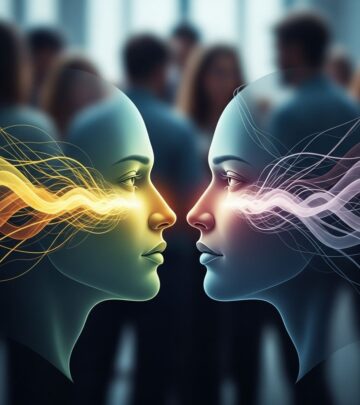Understanding the Mandela Effect: Why Our Memories Sometimes Deceive Us
Explore the science, stories, and theories behind the Mandela Effect—a puzzling phenomenon of collective false memories.

What Is the Mandela Effect?
The Mandela Effect refers to a widespread psychological phenomenon in which large groups of people recall events, facts, or details differently from the historical record. Unlike typical misremembering, these shared false memories often feel vivid and certain, leading many to question whether reality itself can shift or be reinterpreted by collective memory.
The term was first coined in 2009 by paranormal researcher Fiona Broome, who realized that she and numerous others strongly remembered South African activist Nelson Mandela dying in prison during the 1980s—a historical event that never occurred. In reality, Mandela was released in 1990, became South Africa’s president in 1994, and passed away in 2013.
Origins of the Mandela Effect
Fiona Broome developed the phrase “Mandela Effect” after noticing many people had the same mistaken memory about Mandela’s fate. She launched a website encouraging visitors to share other instances where collective memory diverged from recorded fact. The idea spread virally across the internet, spawning discussion forums, media coverage, and even a 2019 film titled The Mandela Effect.
Three main characteristics define the phenomenon:
- Recalling entire events that did not actually happen
- Having memories where facts are partly or wholly inaccurate
- Many unrelated individuals sharing nearly identical false memories
Famous Examples of the Mandela Effect
The Mandela Effect extends far beyond Nelson Mandela’s life. Here are some of the best-known examples:
- Berenstain Bears vs. Berenstein Bears: Many recall the beloved children’s book series as “Berenstein Bears,” even though the correct spelling has always been “Berenstain Bears”.
- Looney Tunes vs. Looney Toons: The animated series is officially “Looney Tunes,” but some remember it as “Looney Toons”.
- Monopoly Man: The Monopoly mascot, Rich Uncle Pennybags, is remembered by countless people as wearing a monocle, yet he never has.
- Fruit of the Loom Logo: People often recall the fruit logo with a cornucopia, which historically has never been part of the design.
- Pikachu’s Tail: Some fans remember Pikachu having a black tip at the end of its tail, although the character’s tail is always yellow.
- Famous Movie Quotes: Iconic lines are routinely misremembered, such as “Luke, I am your father” from Star Wars (correctly: “No, I am your father”) and “Mirror, mirror on the wall” from Snow White (the actual line is “Magic mirror on the wall”).
- Location of New Zealand: Some incorrectly place New Zealand north of Australia instead of its correct location southeast.
How Common Is the Mandela Effect?
Research suggests that the Mandela Effect is widespread. In a 2020 study published in Psychological Science, 76% of adults made at least one detectable error when recalling information. Such findings illustrate that collective false memories are a frequent and predictable part of human cognition.
Exploring the Causes: Why Do False Memories Spread?
While the Mandela Effect fascinates many, psychologists and neuroscientists are still working to understand exactly why these shared misremembrances occur. Several scientific theories have emerged:
Confabulation
Confabulation refers to unintentionally fabricating explanations or filling in gaps in memory—even when a person is not aware that they are doing so. Such “honest lying” often happens without intent to deceive and is linked to normal memory processes, as well as neurological conditions like dementia.
False Memories
A false memory is a distorted or fabricated recollection of an event. Some false memories are completely incorrect, while others combine real and imagined details. Factors that contribute include suggestibility, social reinforcement, and repeated exposure to incorrect information.
Priming
Priming involves exposure to a stimulus (e.g., a word, image, or idea) that influences later responses. For example, if you hear “garden,” your mind may default to flowers and vegetables—expectations shaped by experience. Priming can cause groups to anchor their collective recall to stereotypical or familiar elements.
Personal Bias
Personal bias can cause individuals to misremember events based on how those events made them feel or how they interpreted them emotionally. These emotional filters can lead memories to be reshaped in a manner consistent with personal beliefs or perspectives.
Expectation and Suggestibility
Psychologists like Dr. Wilma Bainbridge believe that many shared false memories arise because people recall what they expect to see more than what they actually saw. Anchoring memory to stereotypes, cultural references, or peer discussion—especially online—can strengthen misremembering through the power of suggestion.
Social Reinforcement and Media Influence
The Mandela Effect is amplified by group conversations, especially on social media platforms where erroneous memories are discussed, shared, and validated. Repetition and viral posts can reinforce and spread the mistaken memory, making it feel even more certain.
Parallel Universe Theory
Although not scientifically supported, some pop culture enthusiasts and theorists propose the “parallel universe theory” to explain the Mandela Effect. According to this idea, alternate realities might exist, and at times, events from these universes “bleed” into ours, creating mismatched memories. While intriguing, the concept has yet to find any empirical basis.
Visual Mandela Effect: Seeing Is (Not Always) Believing
The visual Mandela Effect is a subcategory that focuses on images, icons, and visual recollections. Studies show that when participants are asked to draw famous logos or characters from memory, they often make the same mistakes—and do so with high confidence. For example:
- Drawing a black tip on Pikachu’s tail (even though it’s always yellow)
- Adding a monocle to Mr. Monopoly
- Misrepresenting color patterns or symbols in logos (such as the arrangement in the Ford logo)
Even those unfamiliar with the character or logo may repeat common errors, suggesting that cultural expectations and exposures play a significant role in visual misremembering.
The Brain Science Behind the Mandela Effect
Human memory is fluid, reconstructive, and highly susceptible to errors. Memory does not function like a recording device; rather, it is a dynamic system that reshapes itself with each recall, influenced by emotion, context, and suggestion.
- Memories decay and are reconstructed based on fragmented details.
- Emotional salience can reshape how events are remembered.
- Exposure to misinformation, especially in groups, increases likelihood of shared errors.
- Repetition, even of inaccuracies, increases confidence in those memories.
Neuroscience research reveals that the hippocampus and prefrontal cortex are central to memory formation and retrieval. Errors may arise due to interference between similar memories, leading to blending or substitution.
Implications and Cultural Impact
The Mandela Effect is more than a curiosity; it prompts broader questions about the reliability of eyewitness reports, historical documentation, and the construction of public knowledge. In an age of social media and rapid information sharing, the phenomenon shows how easily collective perception can shift.
Its popularity also reflects our fascination with mysteries of the mind and the boundaries between reality and imagination. Popular culture has seized on the concept, with active online communities, viral posts, and even movies dedicated to exploring these collective quirks.
Can the Mandela Effect Be Prevented?
Reducing individual and collective memory errors is possible through a few strategies:
- Being critical of information sources: Verify details before accepting them as fact.
- Seeking original documentation: When in doubt, consult primary sources or records.
- Avoiding repeated assertion of errors: Repetition strengthens both true and false memories.
- Discussing memories with diverse groups: Exposure to varied perspectives can help correct misrememberings.
Debate: Is the Mandela Effect Paranormal or Psychological?
While the Mandela Effect has inspired paranormal explanations—like alternate timelines, glitches in reality, or parallel universes—mainstream science points to cognitive biases, memory decay, and social influence as the primary causes. The most compelling evidence comes from controlled studies demonstrating how expectations, suggestion, and group discussion reliably create similar memory errors across individuals.
Why Is the Mandela Effect So Intriguing?
According to psychologists, the Mandela Effect resonates because it challenges our fundamental trust in memory and reality. As Dr. Wilma Bainbridge notes, “We like to think we understand our minds well and have good control over our memories. The Mandela effect is one of those cases where our memory betrays us, creating a creepy, eerie feeling”.
This tension between confidence and error is both unsettling and captivating, leading many to explore the phenomenon deeper and search for explanations beyond the conventional.
Examples Table: True vs. Mandela Effect Memories
| Subject | Commonly Misremembered (Mandela Effect) | Historical Fact |
|---|---|---|
| Nelson Mandela | Died in prison in the 1980s | Released in 1990, died in 2013 |
| Berenstain Bears | Berenstein Bears | Berenstain Bears |
| Monopoly Man | Has a monocle | Never wore a monocle |
| Fruit of the Loom Logo | Includes a cornucopia | No cornucopia in the logo |
| Pikachu’s Tail | Black tip at the end of tail | Tail is entirely yellow |
| Star Wars Quote | “Luke, I am your father” | “No, I am your father” |
| Looney Tunes | Looney Toons | Looney Tunes |
Frequently Asked Questions (FAQs)
Q: What is the Mandela Effect?
The Mandela Effect is a phenomenon where many people share false memories of events, facts, or details, believing them to be true despite contrary evidence.
Q: How did the Mandela Effect get its name?
The term was coined by Fiona Broome after she and others recalled Nelson Mandela dying in prison in the 1980s, though he actually died in 2013 after years of political prominence.
Q: Is the Mandela Effect a sign of faulty memory?
Yes, it highlights the fluid and malleable nature of human memory, which is vulnerable to suggestion, bias, and repetition.
Q: Are parallel universes responsible for the Mandela Effect?
While popular in speculative fiction and internet culture, there is no scientific evidence to support parallel universe explanations for the Mandela Effect. Most researchers attribute it to cognitive and social processes.
Q: Can the Mandela Effect be prevented?
Although memory errors can never be completely eliminated, critical thinking, checking sources, and exposure to diverse perspectives can help mitigate the spread of false memories.
Key Takeaways
- The Mandela Effect describes widespread collective false memories of events or details.
- Originating from misremembered events in Nelson Mandela’s life, it now encompasses many pop culture and historical examples.
- Scientific explanations include memory biases, suggestion, priming, and group dynamics.
- While paranormal explanations exist, research favors psychological mechanisms.
- The Mandela Effect underscores why memory is fallible—and why critical thinking matters when interpreting shared beliefs.
References
- https://www.britannica.com/science/Mandela-effect
- https://www.allaboutvision.com/resources/human-interest/visual-mandela-effect/
- https://www.simplypsychology.org/what-is-the-mandela-effect.html
- https://www.goodhousekeeping.com/entertainment/g28438966/mandela-effect-examples/
- https://www.youtube.com/watch?v=j1Wy7Otgpqg
- https://www.psychologytoday.com/us/blog/unserious-psychology/202312/the-psychology-behind-the-mandela-effect
Read full bio of medha deb












